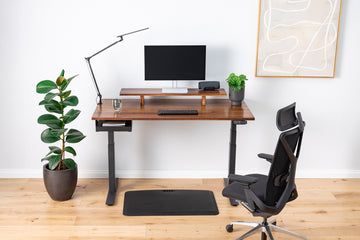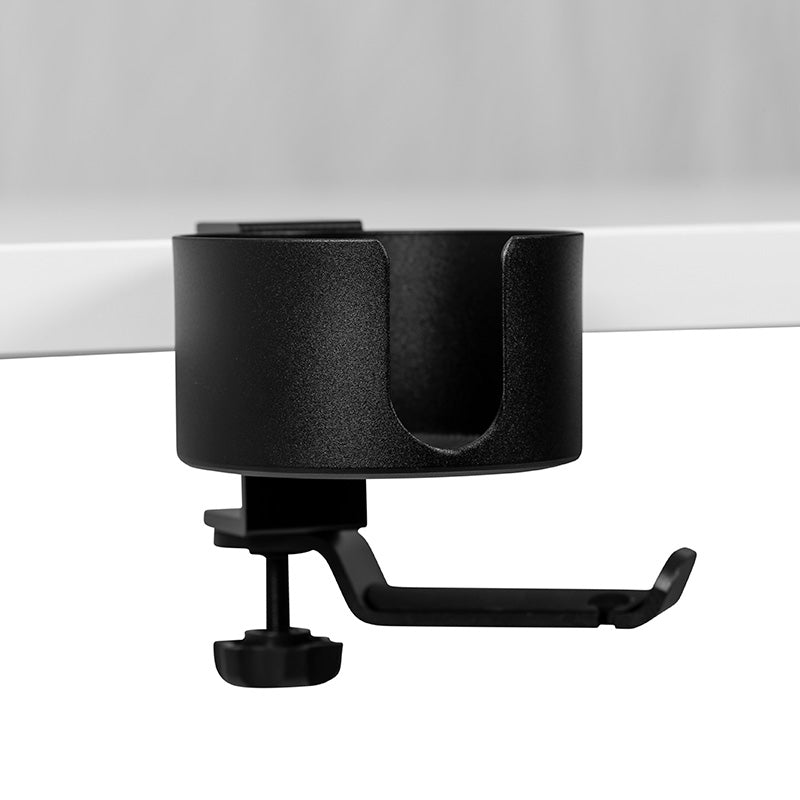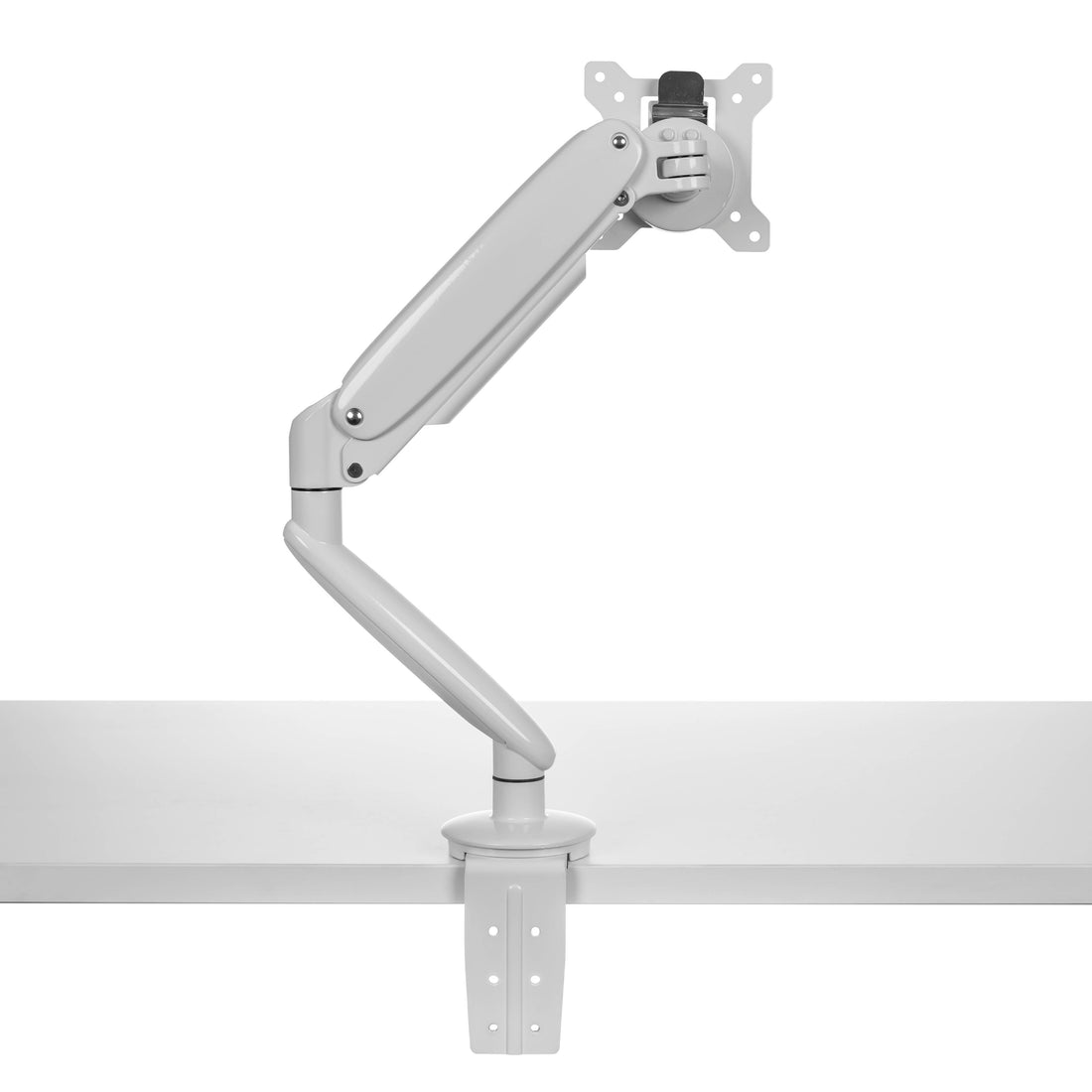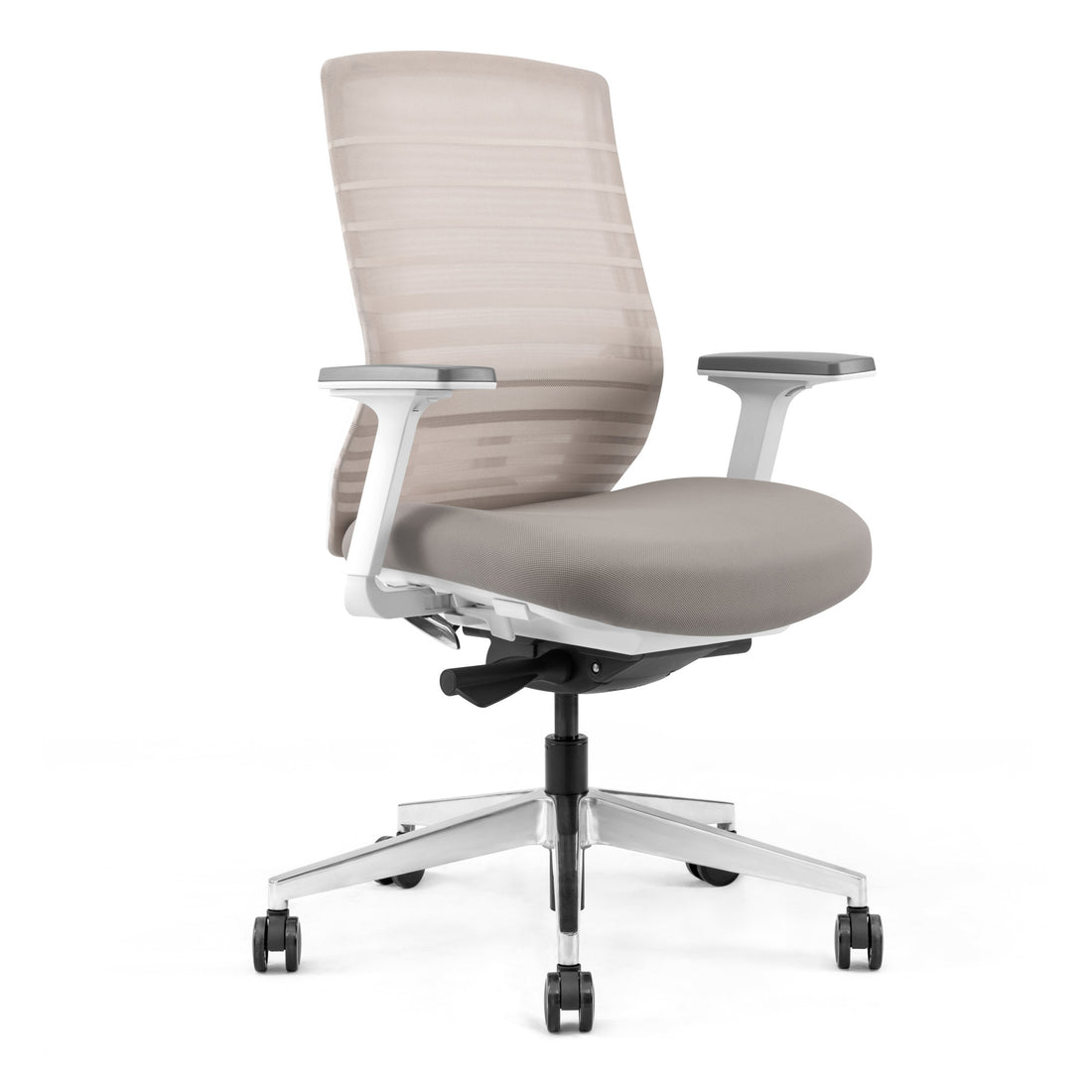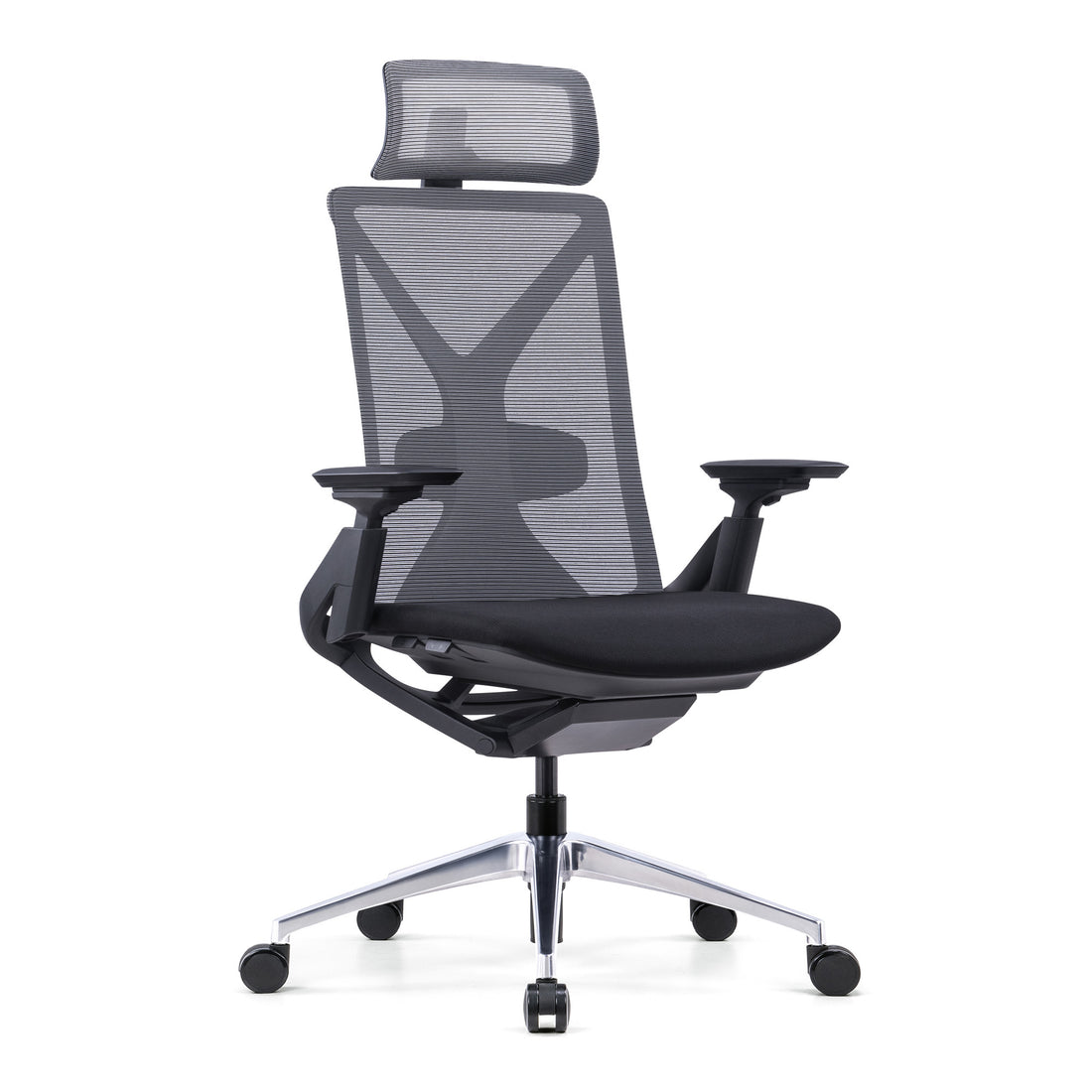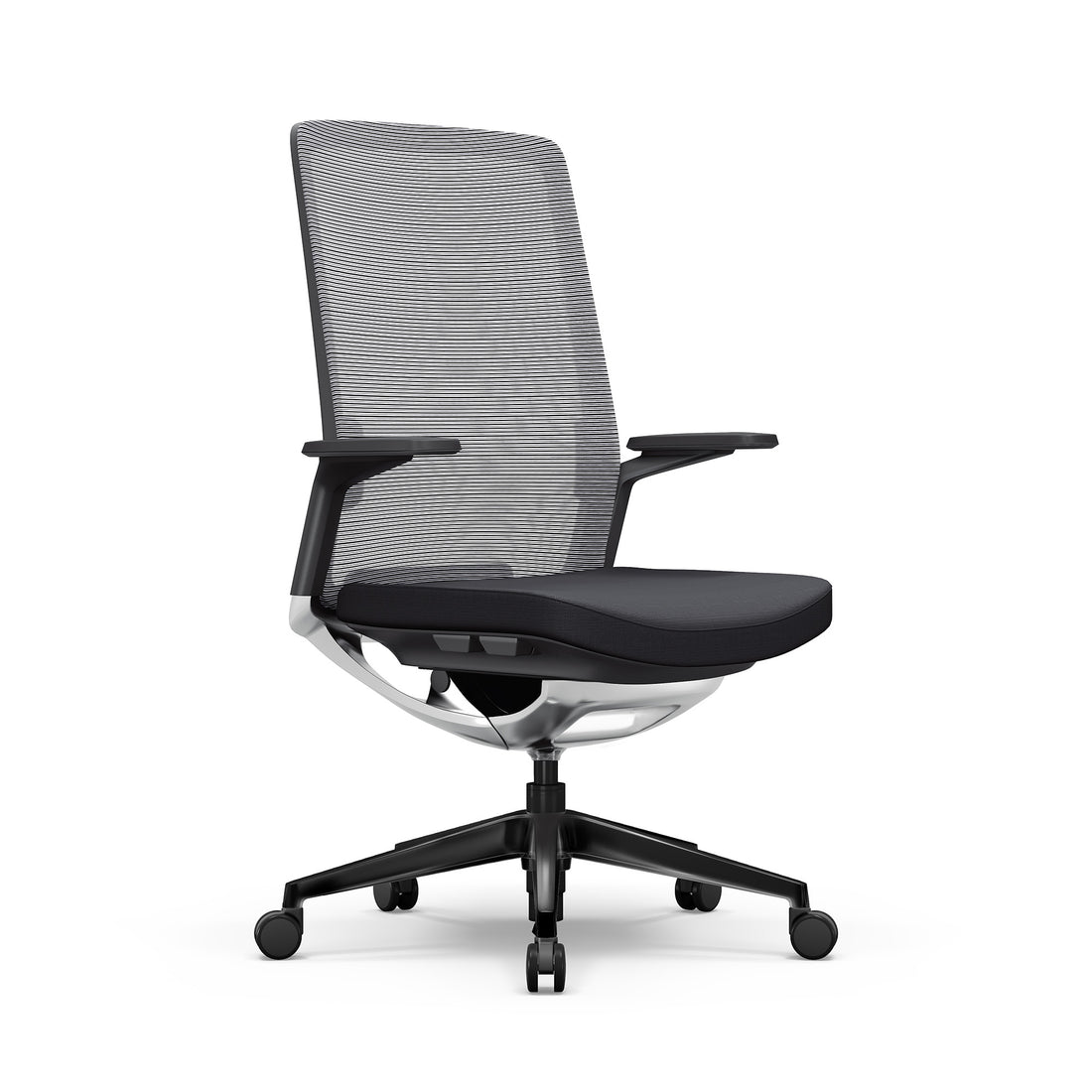You’ve just purchased a brand-new standing desk and can’t help but notice a constant pain in your heel.
We know this scenario far too well but fortunately for you, we know the best possible solution to ensure that pain disappears.
The standing desk heel pain problem is one that many standing desk users have faced. We are here to help you understand what’s causing this pain and how to heal your heel.
Why Use Standing Desks?
Being seated at your desk for hours on end can lead to fidgeting with the height adjustment on your office chair or spinning around in circles. If you need to stretch, you have to stand up from your chair and do a twist or turn.
A standing desk solves both problems as standing at your desk means you won’t be fidgeting with chairs, and you can stretch while you work.
It also makes jumping back into work a seamless transition as you won’t need to prepare yourself for long periods of sitting down.
Standing desks also aid in keeping you fit and ensuring that your body stays active. Working for 15 minutes straight equates to 22 calories burned at a standing desk.

Being seated at your desk for the entire day increases health risks like obesity and cardiovascular disease, damaging your spine and posture in the process.
Standing desks give you the option to sit and stand as they don’t encourage you to stand 24/7. It’s about finding a balance between standing and sitting to provide your body with the best possible health benefits.
Fixed-Height Standing Desks
If you find yourself only standing at your desk and not incorporating sitting in a chair as well, you’re exposing yourself to certain health risks.
Although not as drastic as those risks caused by sitting, one of them includes creating mental fog as it’s important to sit down and process information before jumping back into work.
You may also experience wrist pain at your standing desk if it isn’t set to the correct position. If your desk isn’t aligned with your elbows, then your wrists and arms will begin to ache due to straining.
The other risk is the one we are going to focus on and something that many standing desk users experience due to long periods of standing. We are talking about heel pain.
Standing Desk Heel pain
When you find yourself standing for hours and hours, you’ll eventually notice sharp pains found in your foot: mostly found in the heel.
This pain caused by standing for such long periods is an achy feeling that’s most noticeable when you aren’t standing.
For example, if you choose to sit down or lay in bed for the evening, you will feel a sharp pain towards the base of your heel.
This pain is caused by compressing the nerves in your feet and ankles by standing on hard surface floors such as wooden tiles.
As you’re standing at your workstation, you may find yourself shifting your weight to find an appropriate position in which to work. When you are standing in one position for a long period, your heel carries the brunt of your body weight.
This causes the muscles in your foot and lower leg to grow tired and start to ache.
This pain is the result of poor circulation in the heel and can lead to swollen ankles due to long hours spent at your standing desk.
If you stand, the muscles in your feet work to keep you balanced. These muscles must consistently work and carry your weight which can result in inflammation when this weight isn’t properly distributed.
We have a few solutions as to how you can keep these muscles stabilized and in motion. That way, you can say goodbye to that pesky heel pain.
How To “Heel” the Pain
Find the Right Balance
The first and most important trick is to find a balance between sitting and standing. If you’re a newcomer in the standing desk world, don’t rush into the transition from sitting to standing.
Doing this will lead to hip pain as your body won’t be used to such a drastic change when using a standing desk.

This is a transition that can’t be seamless within a day. Your muscles need time to strengthen and adjust to this transition.
Finding a small office chair to sit on during regular intervals can allow your body to rest after standing at your desk for a while. This also helps establish a healthy balance between sitting and standing.
Since most of the time spent at your desk will be you standing, you won’t need to waste money on an expensive luxury chair. A simple and affordable office chair or stool will be perfect.
Anti-fatigue Mats
Another solution comes free of charge with every height-adjustable computer desk purchase made on UpDown Desk. We are talking about the anti-fatigue mats. Instead of standing on a hard-floored surface, making use of an anti-fatigue mat will cushion the area where you stand.
It works its magic by reducing muscle fatigue and ensures that support is offered to the heel while standing. This significantly increases comfort when working for long periods.
UpDown Desk’s Anti-fatigue Mat is larger than other mats on the market. Coming in at 60cm x 90cm, this mat was designed by occupational therapists who understand that you might want to switch up your stance when standing at your desk.
The smaller-sized anti-fatigue mats don’t allow you to figure out which stance is the most comfortable. This leads to discomfort and that heel pain becomes a problem once again.
Making use of an anti-fatigue mat also ensures that your posture remains healthy.
This is done by allowing the body to distribute weight evenly throughout your feet, allowing you to work longer and be comfortable.
These mats reduce the strain on pressure points in your feet and increase the circulation of blood, ensuring that those muscles remain in motion.
The Right Footgear
Another tip would be to wear shoes, more importantly, shoes that offer the most comfortability.
Standing on your bare feet when using your standing desk, especially on a hard surface, prevents the minuscule movements in your feet that keep the blood flowing. This leads to inflammation in the heel, causing pain and fatigue.
Shoes that typically offer the most cushioning are running shoes, but it’s best to head to your local shoe store and try on a few shoes.
Stretches
The final tip that won’t cost a cent is to stretch. When you stand for hours on end, the muscles in your feet and legs tense up and can cause them to shorten.
As soon as you notice sudden cramps or pain in the heel, be sure to do some brief stretches as this will increase endurance and decrease any pain inflicted.
These stretches include ankle pumps or rolls to assist with the heel, or slowly raising yourself on the edge of a surface to support your calves.
Be sure to stretch both before and after working as it not only eases any tense muscles but also prepares your muscles for a long day of work.
Did you find our blog helpful? Then consider checking:


